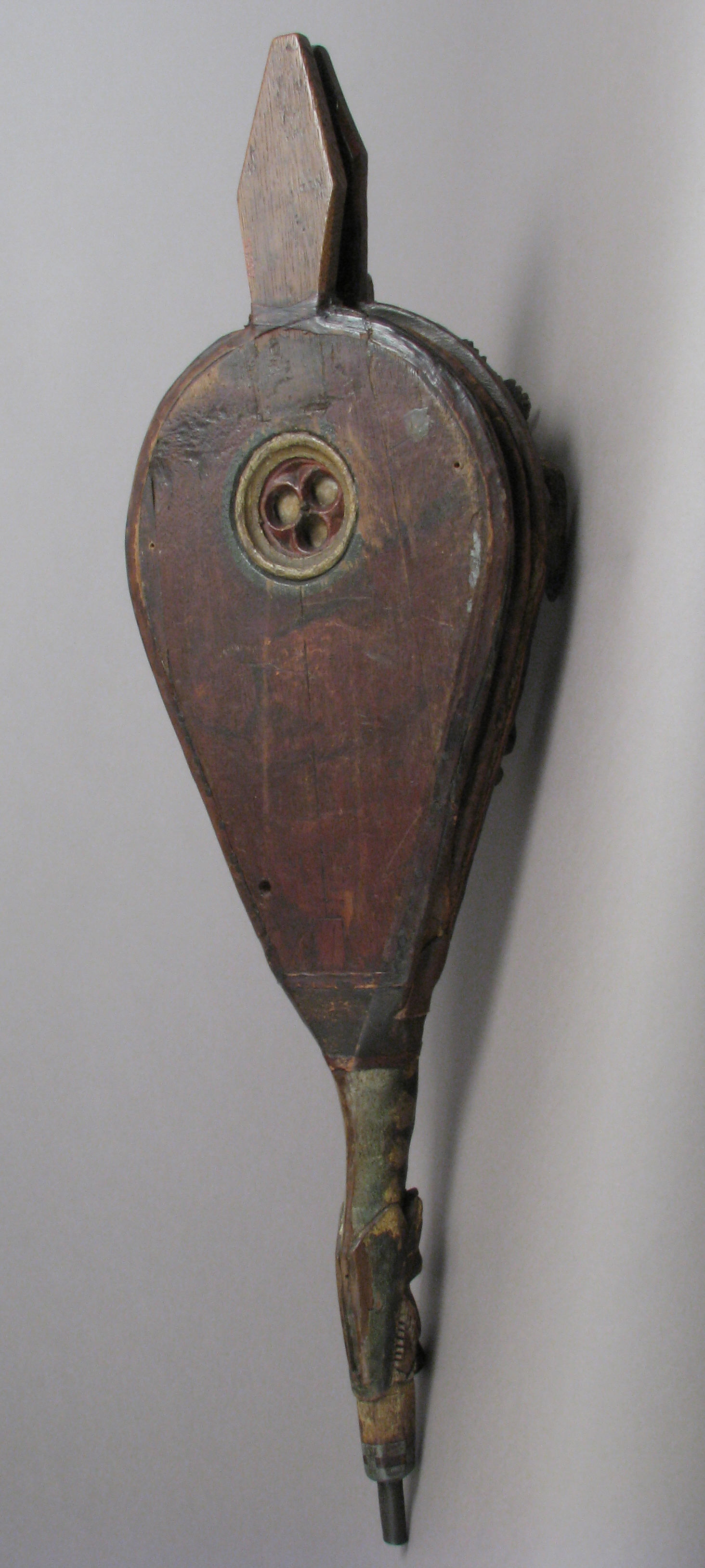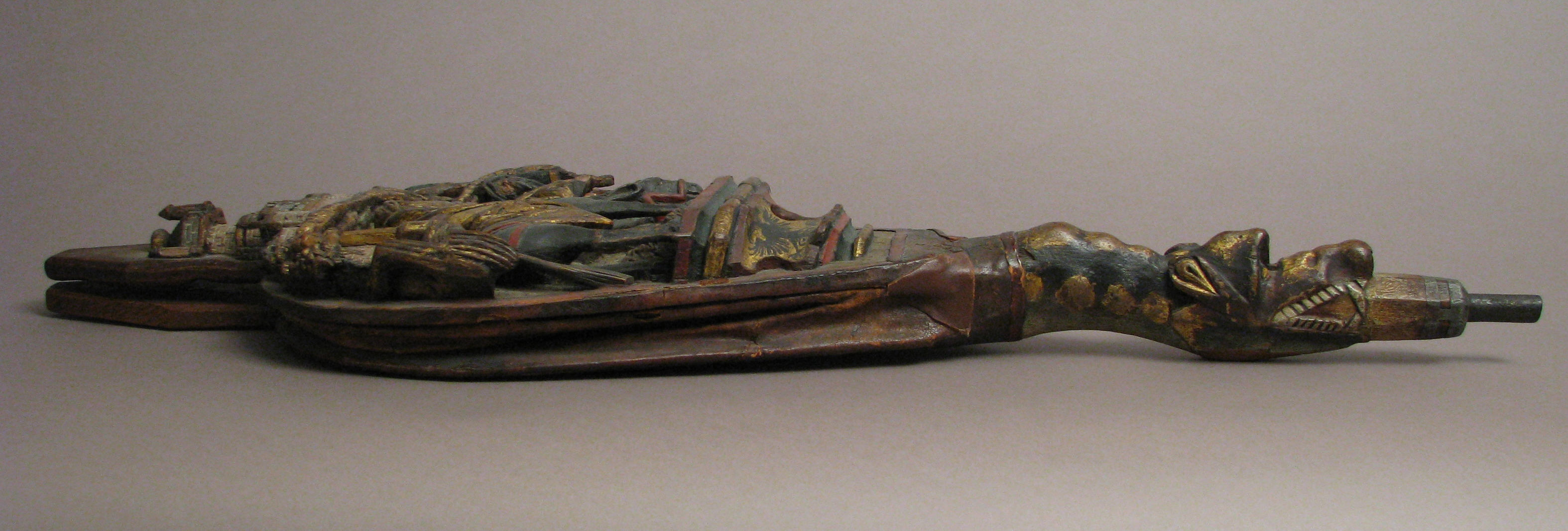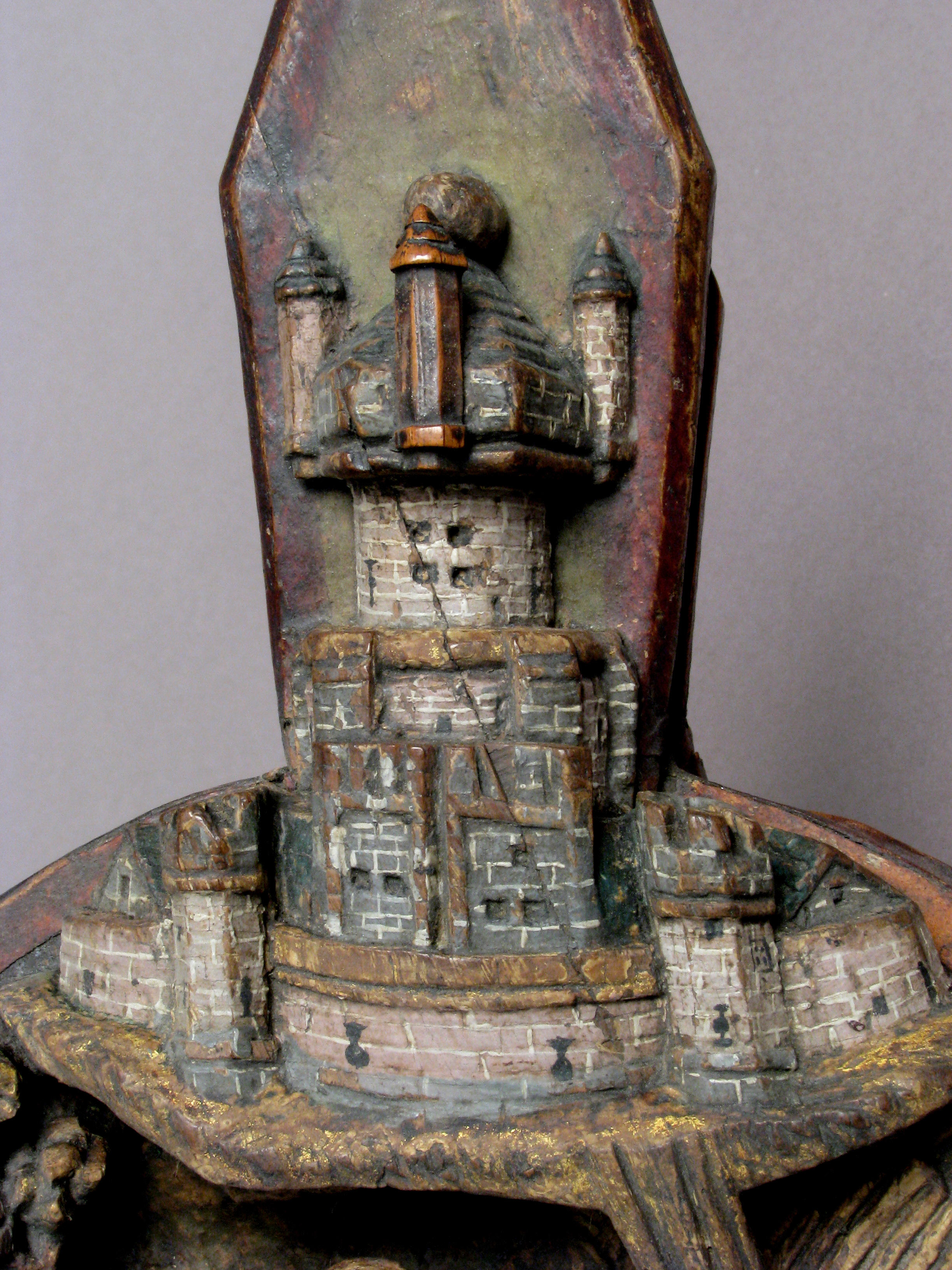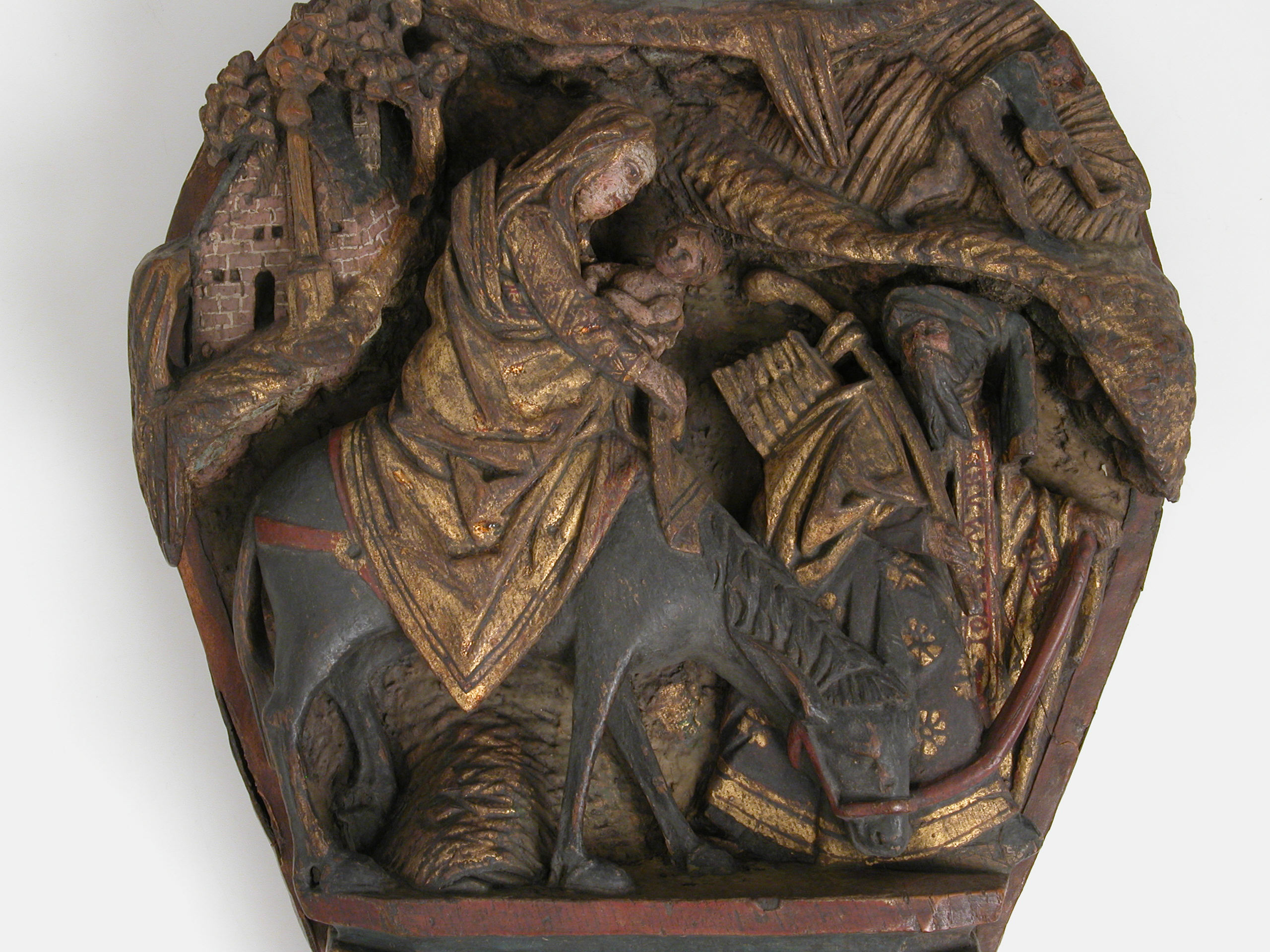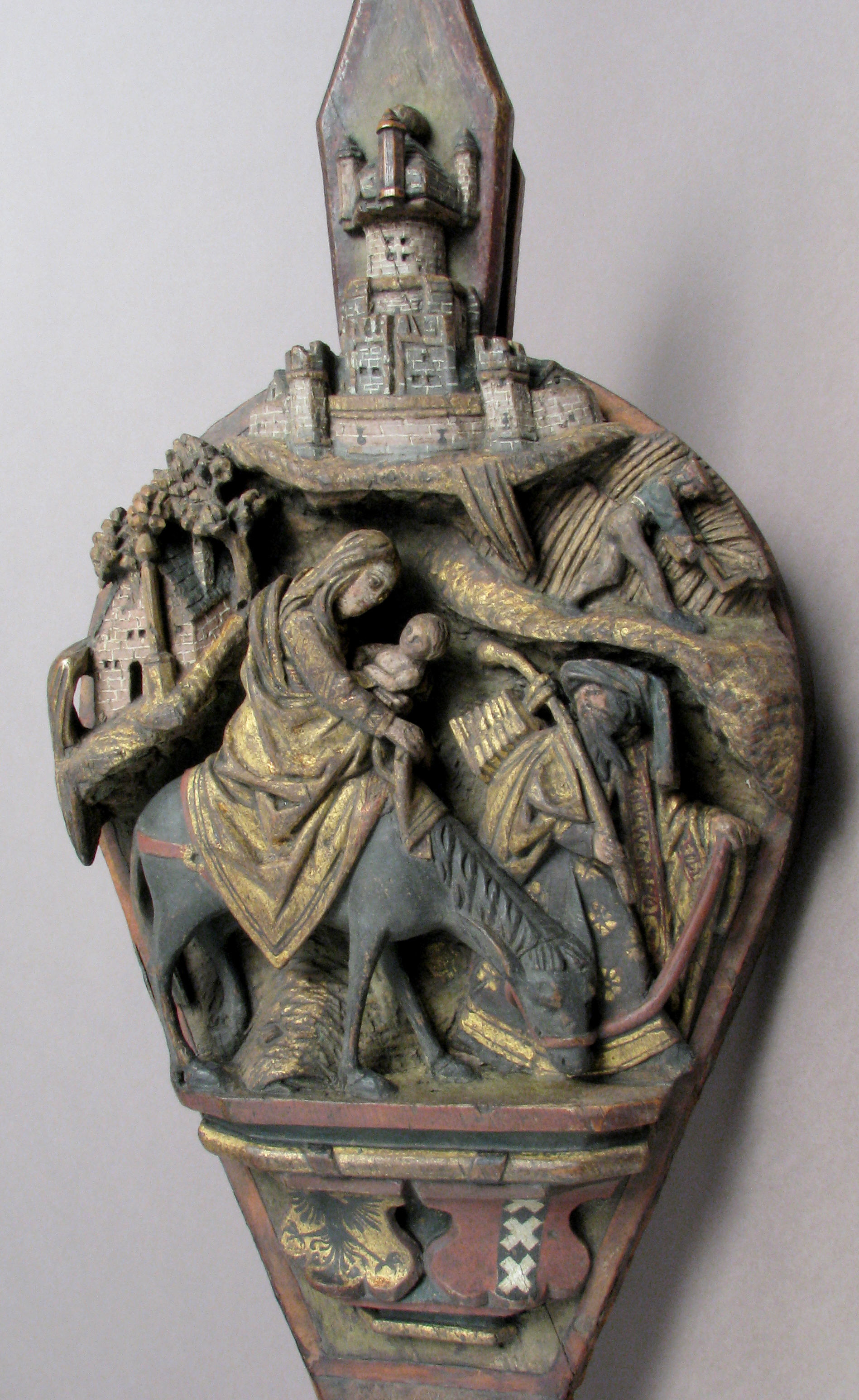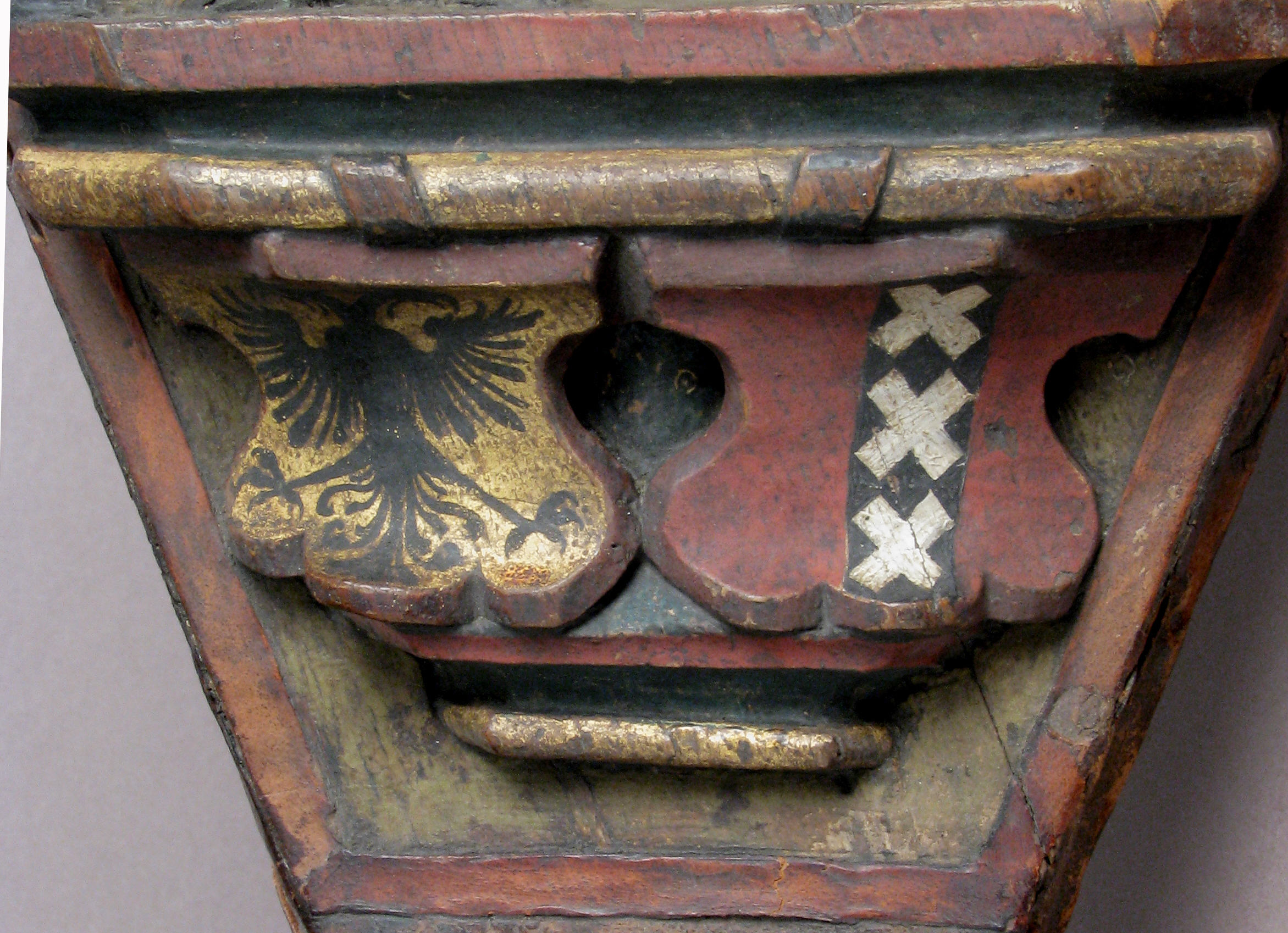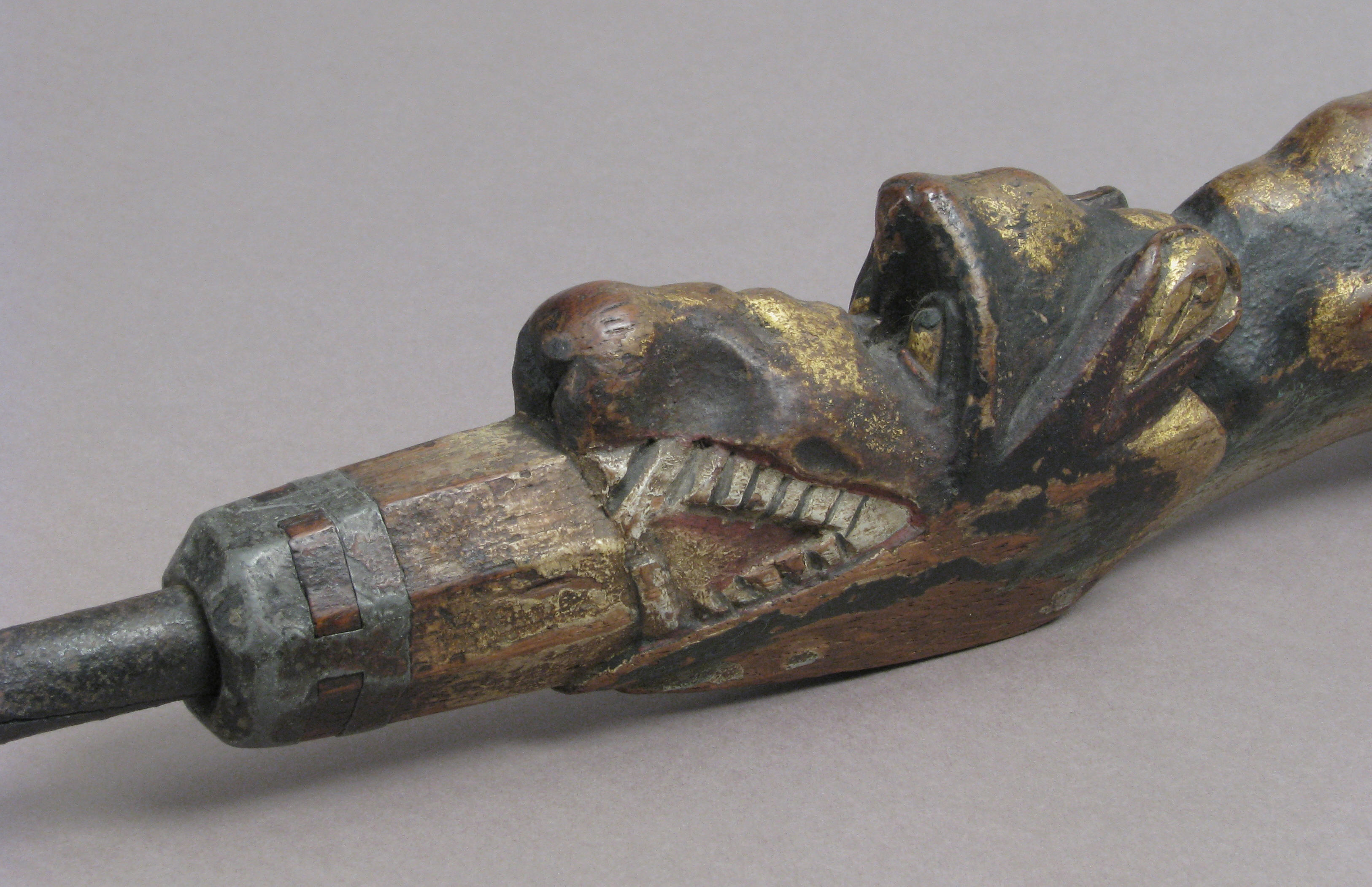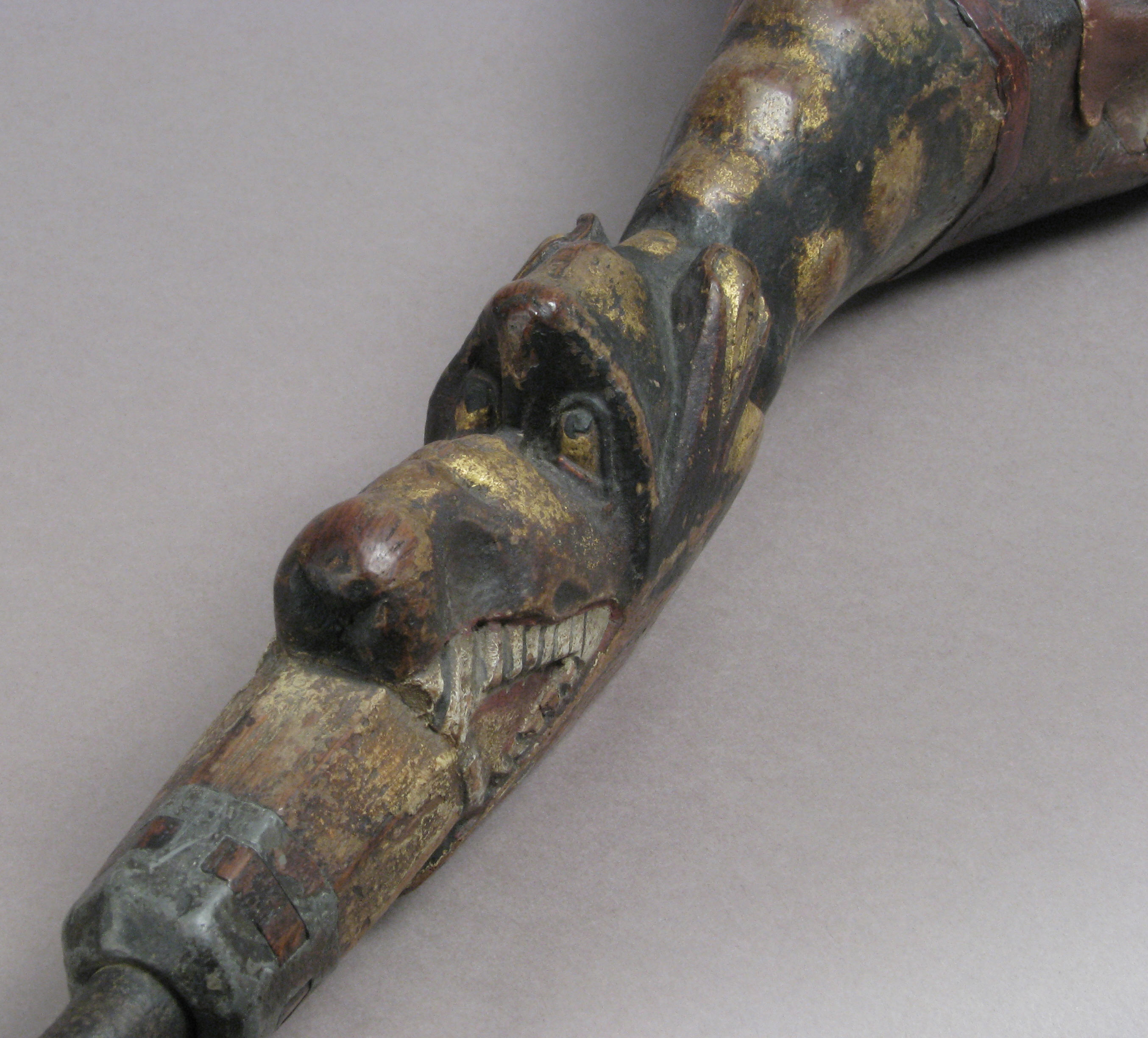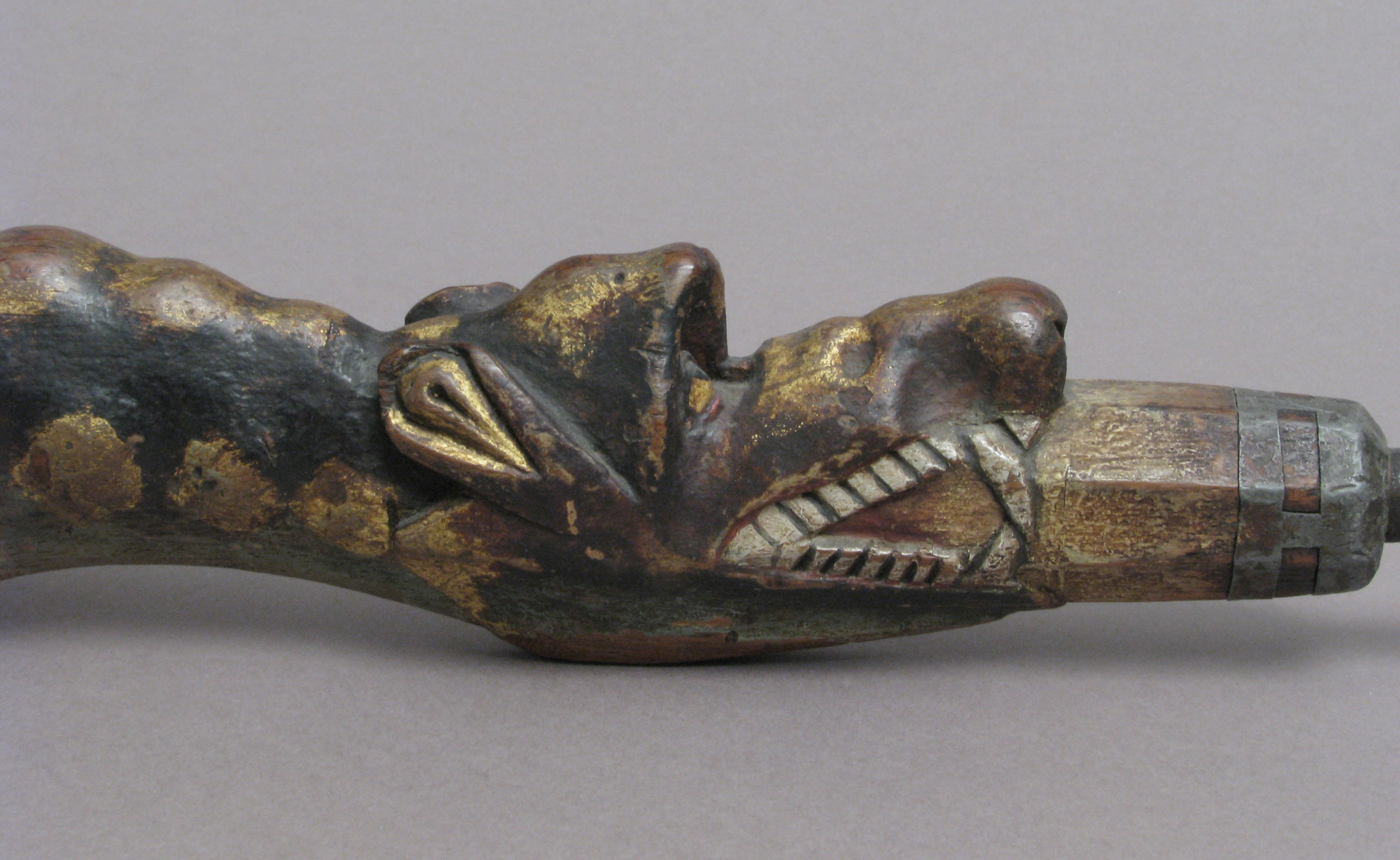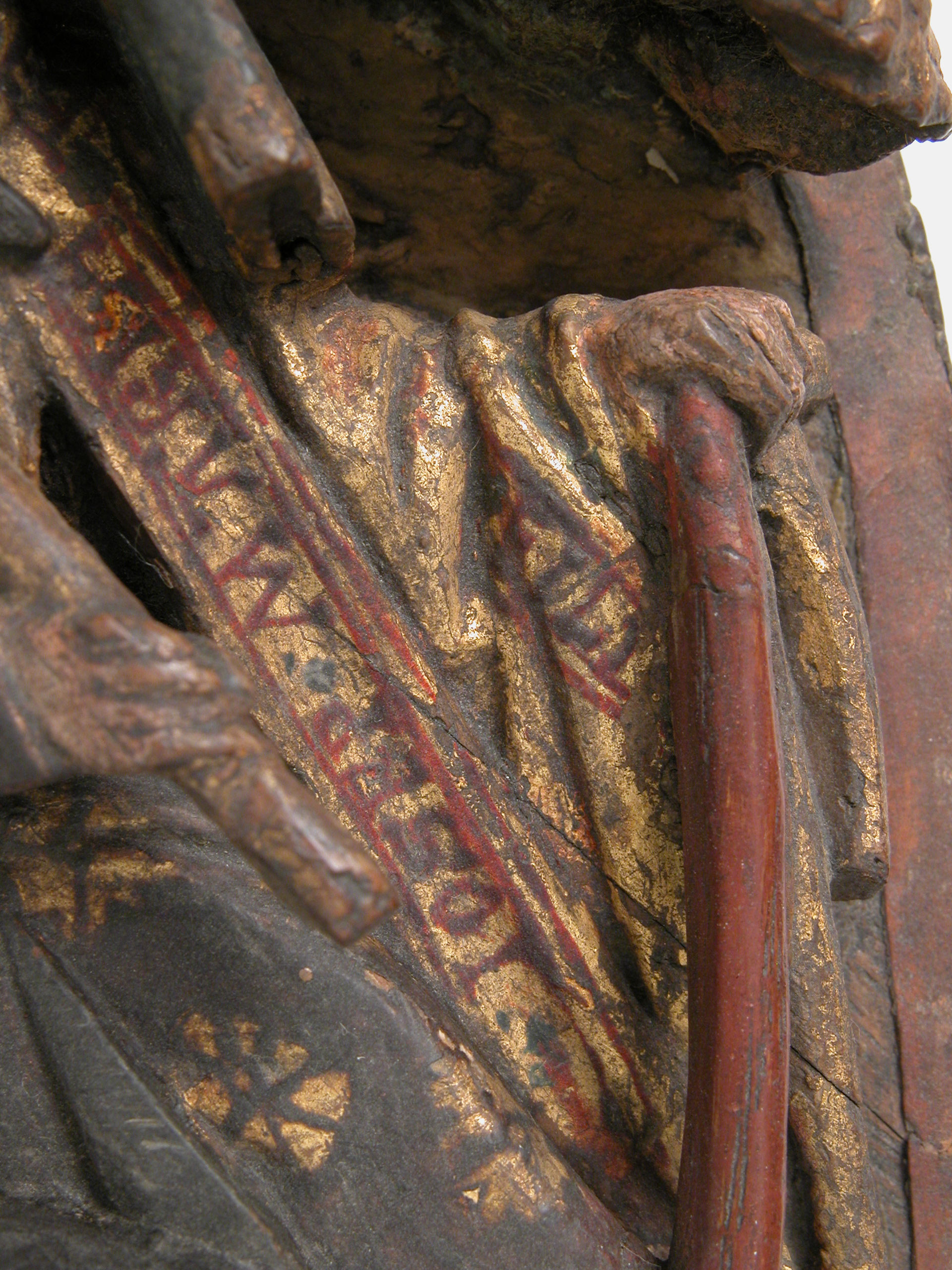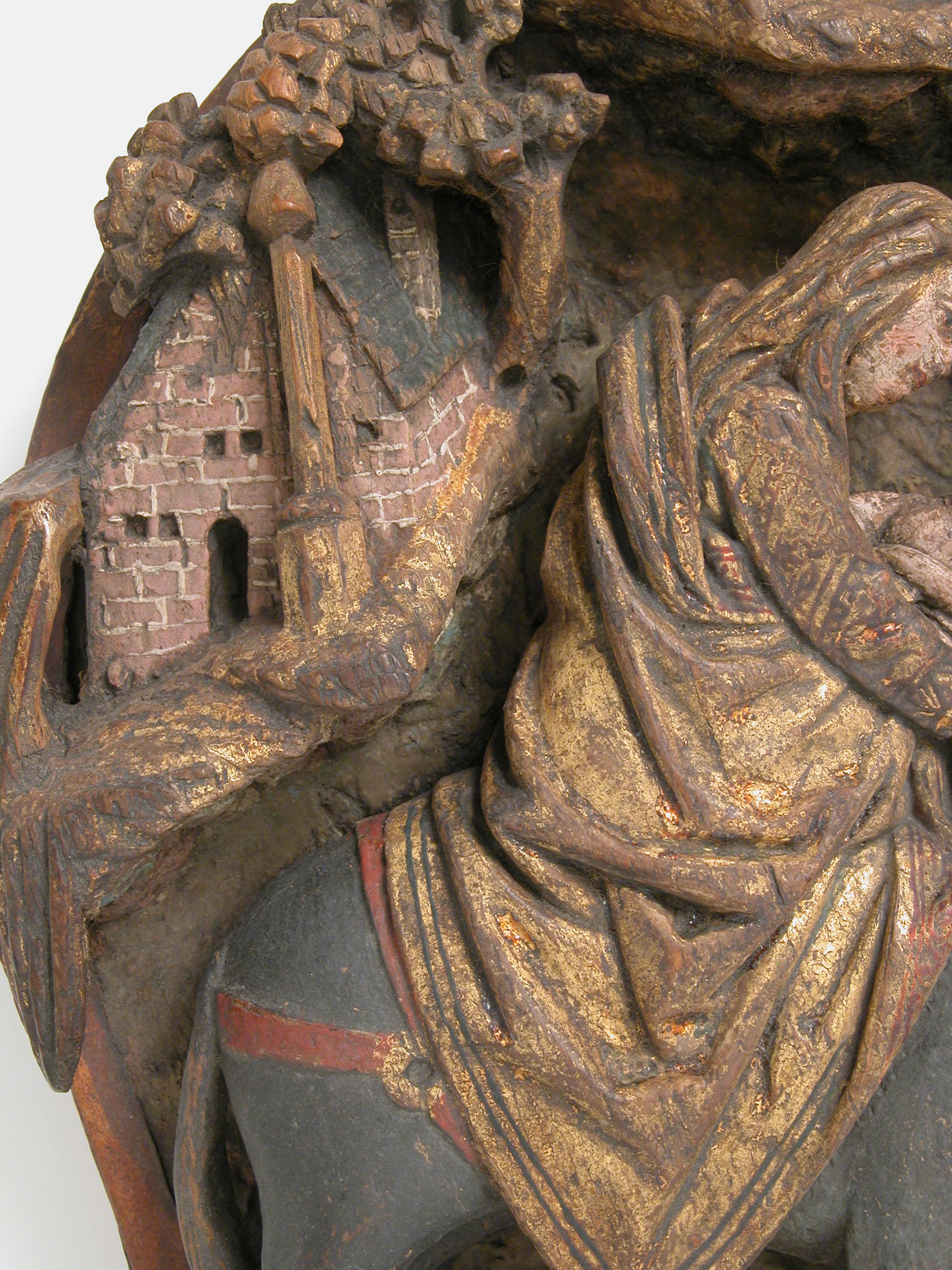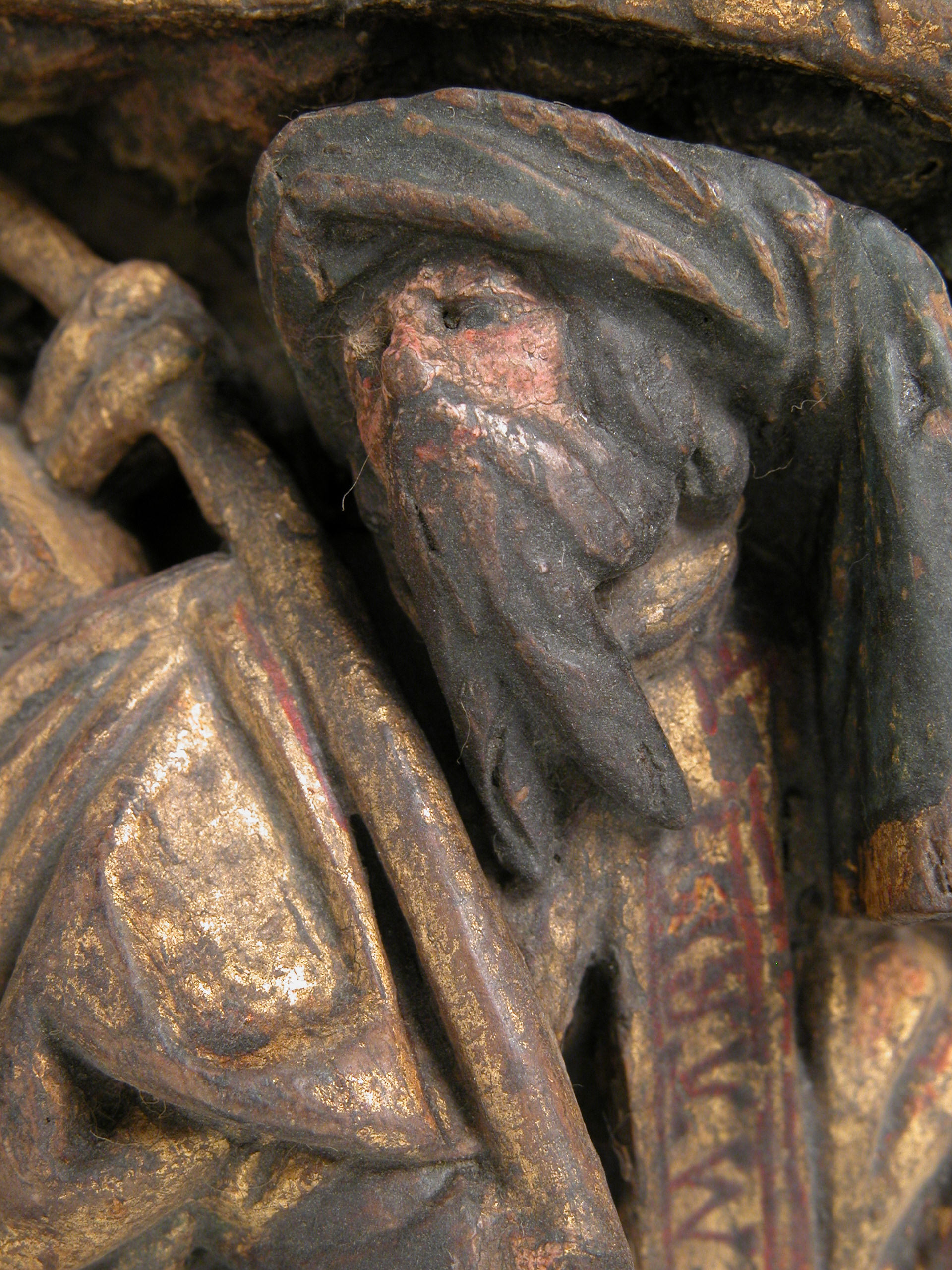Bellows with the Flight into Egypt
Not on view
By the fifteenth century, bellows, an implement known from antiquity, were often richly decorated and were displayed on the chimneys of domestic interiors. This bellows, carved in high relief and once brightly painted, shows on one side the Flight into Egypt. Beneath the scene are two coats of arms, the left one unidentified, the right identified as that of Amsterdam, indicating that the bellows was once used in a household or a guild hall in that city. The back of the bellows has a circular inset within a deep gilded molding pierced with three openings for the intake of air. The air was expelled through the metal pipe projecting from the jaws of the dragon’s head at the end of the bellows. The sides of the bellows are of leather.
The decoration on this bellows of a religious subject does not indicate that it belongs to a religious establishment; such themes frequently appear on objects of daily household usage.
This same scene, in an almost identical representation, though without arms on the shields, appears on a bellows thought to be from Utrecht, circa 1510. The existence of two such similar bellows suggests that these items, in common use in the household during the Middle Ages, may have been produced in large quantities with the arms left blank for completion after purchase.
Due to rights restrictions, this image cannot be enlarged, viewed at full screen, or downloaded.
This artwork is meant to be viewed from right to left. Scroll left to view more.


